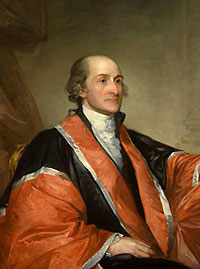Foreign and Domestic Affairs
 A split developed in Washington’s Cabinet based on views about the French Revolution. The Federalists opposed the revolution. In their opinion, it was a rebellion that had gone astray. However, the Anti-Federalists, who included Jefferson, saw the revolution as an ideological extension of what the colonists had done when they rebelled against the mother country. As the nation debated the political ideology behind the revolution, war broke out between Great Britain and France.
A split developed in Washington’s Cabinet based on views about the French Revolution. The Federalists opposed the revolution. In their opinion, it was a rebellion that had gone astray. However, the Anti-Federalists, who included Jefferson, saw the revolution as an ideological extension of what the colonists had done when they rebelled against the mother country. As the nation debated the political ideology behind the revolution, war broke out between Great Britain and France.
The war between Great Britain and France put the United States in an awkward position. The United States did not want to offend the British, especially since they had such a solid naval power. And yet, the French had been allies to them during their own revolution. So, in 1793, President Washington issued the Proclamation of Neutrality. The United States would remain neutral (not take a side) in the war. However, in 1794 Washington was forced to reconsider his decision to remain neutral. He sent Chief Justice John Jay to London to negotiate a treaty with the British. The result was Jay’s Treaty, in which Britain agreed to leave the forts it occupied in the Northwest territory and to increase trade between the United States and Great Britain.